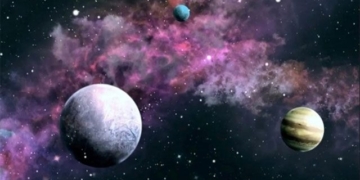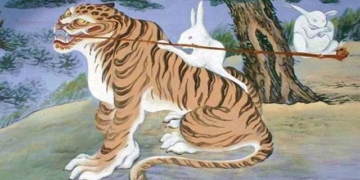Today, weather icons seem to be as common as the alphabet for everyone. These icons are highly visual: a wavy bubble shape representing clouds, a circle with rays emanating outward indicating sunny weather,… However, these icons did not appear randomly; they are a clever invention! So, who came up with these icons?
The commercial weather map was first introduced by the U.S. Weather Bureau in 1910. At that time, people used rather obscure symbols to convey weather conditions: an empty circle depicting sunny weather, a filled circle representing rain, and arrows indicating wind. This symbol system quickly became popular across the United States and was used not only by meteorologists but also by most ordinary residents.
![]()
A weather forecast program on the BBC in 1969, the icons were still quite confusing
Until the 1970s, meteorologists continued to use complicated symbol systems to predict weather conditions. It wasn’t until a design student emerged and changed everything: a set of intuitive, vibrant, and easily understandable weather icons. That student was Mark Allen, a student at Norwich School of Art, United Kingdom. In fact, the weather icons used in England at that time were also not very user-friendly for the majority of people, and of course, Allen noticed that.
Like everyone else, Allen watched the weather forecast program broadcast every afternoon on the BBC. At that time, the weather forecast program was not as modern as what you see on VTV or HTV today. To describe the weather conditions in various areas, the presenter would slide magnetic symbols over a metal map. Back then, triangular shapes represented rain, asterisks indicated snowfall, and horizontal lines over certain areas depicted average air pressure… It was that simple.
One day, Allen had a thought: “Are they still using hieroglyphs from ancient times that confuse people? Why does a triangle represent scattered rain?!?” Ultimately, for his graduation project in 1974, Allen chose to redesign the weather icons. At that time, Allen referenced the icon designs of Otl Aicher, who used interlocking circles to create the Olympic symbol in 1972.
![]()
Prototype of the new icons designed by Allen, used by the BBC shortly after
Drawing from that inspiration, Allen adopted a similar style to create the weather icons. He used a rounded, protruding line to depict clouds and added simple symbols below: droplets for rain, a lightning bolt, or horizontal lines on the side to indicate sunshine. Allen stated: “The center of the icons will be the cloud, and from here, all other weather conditions will arise.”
Shortly thereafter, in 1975, the BBC accepted Allen’s icon design and purchased the rights to use the icon set for £200. Today, Allen’s original drawings are still preserved. They represent the most elegant and user-friendly weather icons for the time. The chaotic symbols used in the previous decades were transformed into a much more modern design. However, they were still in black and white.
![]()
By the 1980s, the advent of computer graphics provided designers with more powerful tools to standardize weather icons. However, due to hardware limitations, the icons still had low resolution and lacked color variety. Mike Nelson, a meteorologist working for ColorGraphics Weather Systems, stated: “You only have 16 colors to design. Everything you create is limited by that framework.”
It wasn’t until the late 1980s, when computer systems improved enough for designers to create more detailed icons based on the original prototypes. At the same time, weather forecast information began to be published on websites and mobile phones. From this point on, weather icons became more diverse and lively. Nevertheless, the “cloud icon” remained a crucial component of the entire weather system.
![]()
Weather icons used on Microsoft’s Windows Phone
Around the year 2000, meteorologist Dennis Cain, working for the Texas weather station, designed a set of weather icons incorporating images: rain on the street, wind turbines, headlights in fog,… This became the standard imagery on the reputable American weather forecast site Weather.gov.
In 2011, the BBC finally ceased using Allen’s weather icons. Designers argued: “Current weather information is increasingly updated to contain more details and figures. This requires a new set of weather icons to balance aesthetics and content richness.” This new set featured dynamic, high-resolution images displaying various environmental states.
![]()
Weather icons on Apple’s iOS 7, modern flat design but still includes cloud icons
As we can now see, weather applications have been a driving force behind the changes at the BBC. This includes the launch of the weather app on Apple’s iOS with a completely modern design. The HTC icon version also played a significant role in shaping current weather icon standards. Instead of rigid icons, what we see today on our phone screens are dynamic icons, resembling real-life scenarios. Nevertheless, the original prototype idea of centering around clouds continues to influence designers today and may do so in the future.


















































